When you think of a great white, those iconic triangular teeth are often the first thing you picture. But many are unaware about great white shark teeth facts!
Whether cruising underwater or lunging at something above the surface, the teeth-filled maw of the great white is one of the most recognizable – and one of the most terrifying – things about it.
The fact is that the great white’s teeth make for more than just a great movie poster. They’re adapted perfectly for their purpose and sport various features that make them ideally suited for the shark’s needs – both when it comes to hunting and when it comes to consuming and digesting their prey.
A shark’s teeth are also one of the most formidable sights of a great white shark and generate a number of valid questions from shark enthusiasts, such as how many teeth a great white shark has and how they help these apex predators hunt.
Whatever questions you have about great white shark teeth, you’ll know the answers by the end of this article!
Without further ado, then, let’s take a look at the most mind-blowing facts about what might be the most feared teeth on the planet.
How Many Teeth? A Great White Has About 50 Teeth At Any One Time
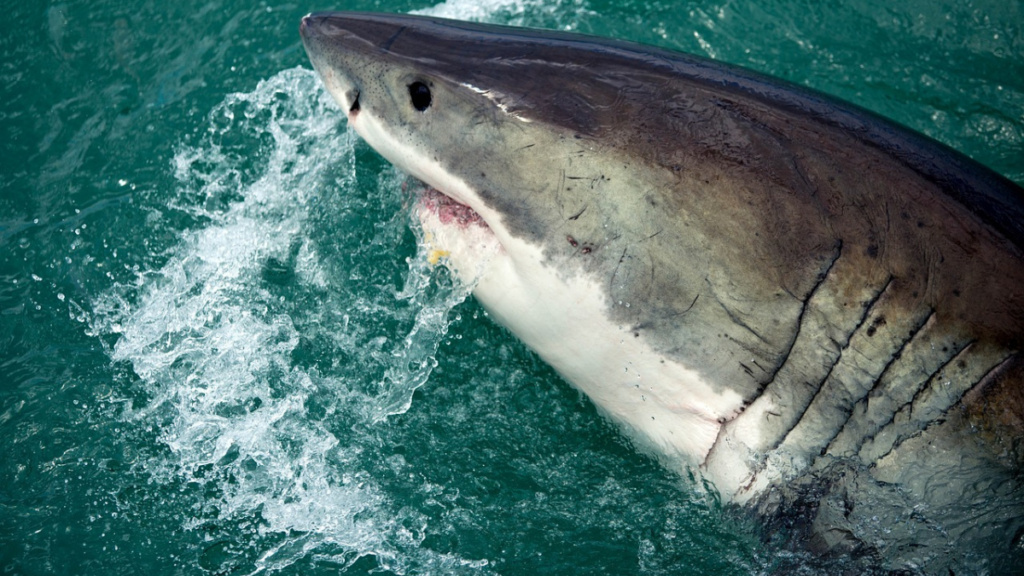
The first question to answer is how many teeth a great white has. At any given moment, a great white shark has approximately 28 visible teeth in its upper jaw and 25 in its lower jaw, for a total of about 50.
However, this doesn’t tell the whole story. Behind those rows of a shark’s teeth are another 5-6 rows embedded in the gums, slowly coming through to replace the frontmost sets.
The reason for this is simple – great whites lose their teeth all the time. Subduing struggling, slippery prey like seals, sea lions, and cetaceans isn’t easy, and teeth will quite often come loose or break off.
How Can Great Whites Grow So Many Teeth?
The reason that great whites are so easily able to replace their teeth is that, unlike human beings, these teeth are not set into the bone.
They’re actually embedded into the gums, which makes growing new teeth – and pushing them forward – much easier than in animals like human beings.
A Great White Will Go Through 30,000 Teeth Throughout Its Life
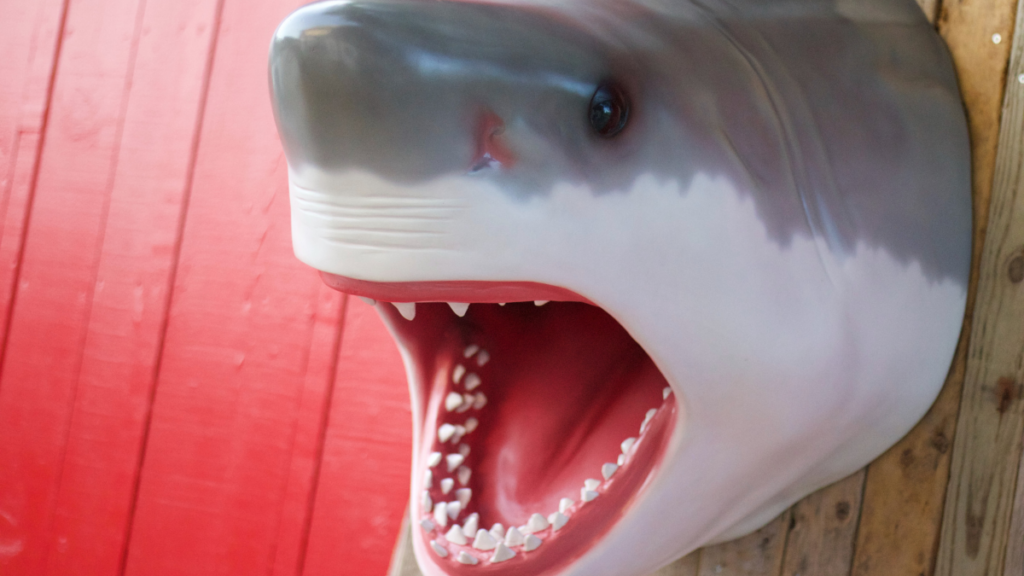
Human beings have around 52 human teeth in total. This includes their milk – or baby – teeth, which number 20, and the full set of adult teeth, which number 32. And that’s it, for our whole lives.
Great whites, on the other hand, just keep going. There’s no limit to the number of great white shark teeth they can grow, and new ones are constantly coming through to replace old or broken ones.
This means that over the course of its life, the average great white will get through an astonishing 30,000 shark teeth.
A Great White’s Razor Sharp Teeth Are Retractable, and not just its Triangular Upper Teeth, Either!
Something that is quite surprising about the teeth of a great white shark is that they can be retracted – and extended – much like a cat’s claw.
If you’ve ever watched a video of a great white shark clamping down on a piece of bait close-up, you’ve probably seen these needle-like teeth in action.
The gums of the shark seem to retract, leaving each great white shark tooth exposed and more able to sink deeply into its prey.
A Great White’s Teeth Are Essential For Hunting – And For Feeding
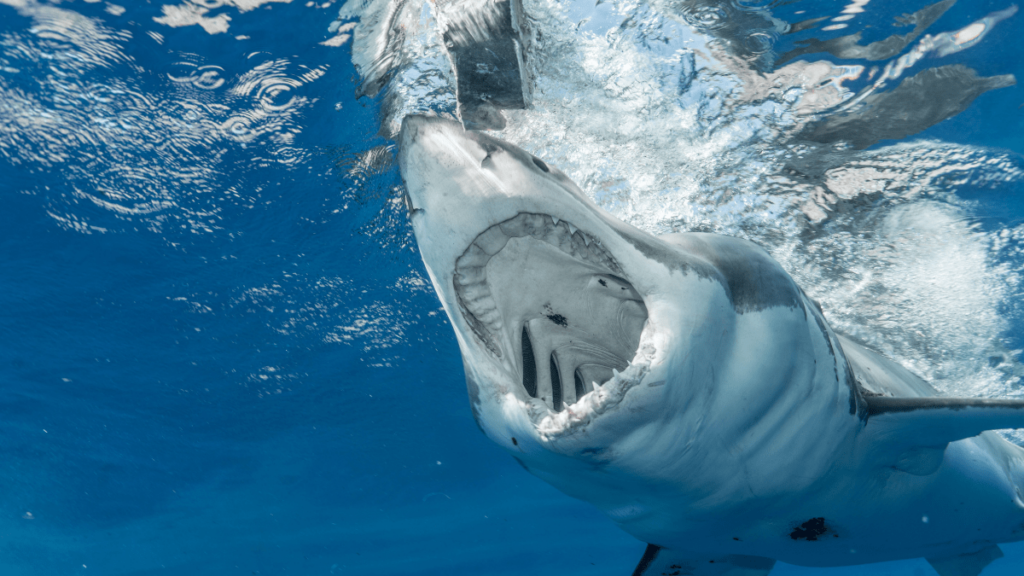
Great whites don’t really have jaws that are suited to masticating – that is, chewing – their food, which means that they have to improvise when it comes to getting their meat into bite-sized chunks.
These are apex predators, and the great white shark’s teeth play a huge part in this process. They’re serrated, which makes them perfect for sawing through flesh, and means that they play a dual role for the great white.
The first role is during hunting, where the shark must rely upon the massive force behind each bite, as well as the sharpness of its teeth, to incapacitate its prey.
How A Great White’s Teeth Help In Hunting
This massive initial bite, which is typically the only one the shark makes before feeding, is designed to cause overwhelming damage to the prey and render it unconscious or immobile very quickly.
Because the teeth are so sharp, too, they cause massive bleeding, making it easier for the shark to return to its victim and drag it off for feeding without too much resistance.
How A Great White’s Teeth Help In Restraining Prey
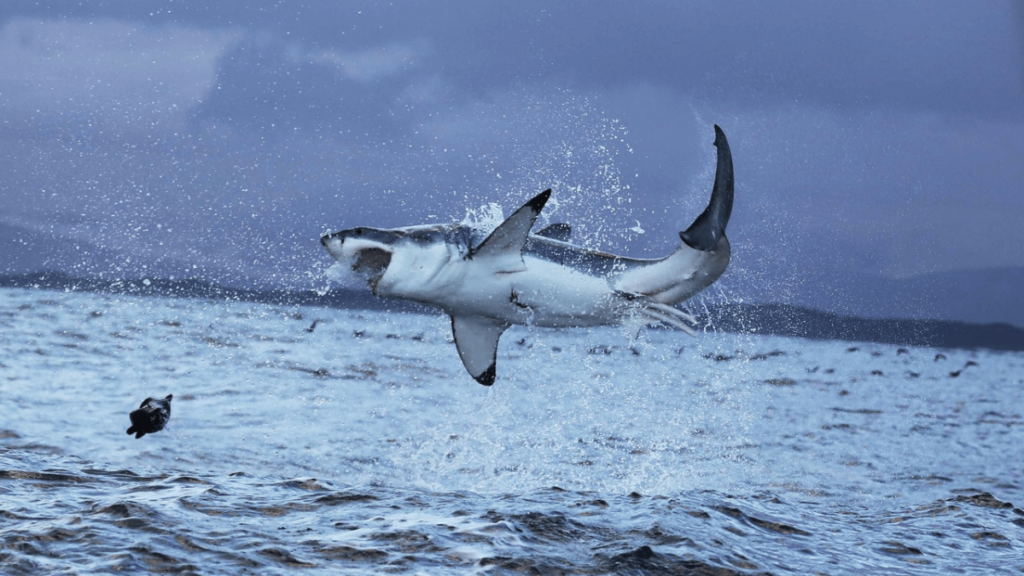
However, the great white will not always pull the ‘bite and retreat’ technique on its prey.
If it’s a sufficiently small animal – like some smaller breeds of pinniped or a diminutive shark – it will instead grab the animal, drag it below the surface, and hold it until it stops struggling. In this instance, the serrated teeth serve it well in holding the animal in place.
How A Great White ‘Chews’ With Its Teeth
The final purpose of the teeth is, as we touched upon before, for ‘chewing’ – or preparing the meat for consumption. As sharks cannot really ‘chew’, what they do instead is clamp down on the meat and shake their heads vigorously from side to side, sawing off chunks that they can then safely swallow.
Again, this isn’t chewing, exactly, and they need to swallow chunks of meat whole. This means that their digestive process is extremely slow, as it takes a long time to break down the meat.
A great white’s teeth, then, serve a lot of functions. As the only tools the sharks have to interact with the world, they certainly ought to.
Great White Shark Teeth Density
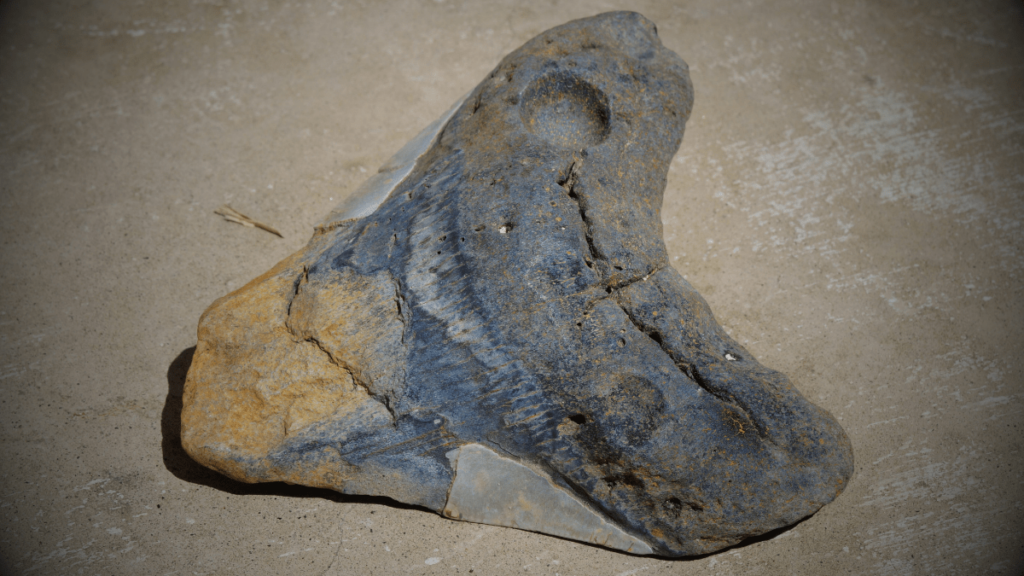
If you were to guess which animal had the harder teeth – humans or great whites – you’d likely guess the shark, right?
After all, great whites exert a bite force roughly twenty times that of a human being, and they frequently have to subdue large, powerful marine mammals. Of course, they have harder teeth, don’t they?
You’ve probably guessed where this section is going, but no, they don’t. Shark teeth are about the same density as those of human beings, which means that they are equally hard.
If nothing else, this gives you some pretty big bragging rights, and you’ll be able to tell your buddies the next time you see them that your teeth are as hard as a great white’s.
This Guide to Great White Shark Teeth Facts is Merely The Tip of the Shark Tooth!
And there we have it – 5 fascinating facts about the teeth of the most fearsome ocean predator in existence. And as teeth go, these eternally regenerating, extending, and retracting multi-purpose knives, pincers, and saws are some of the most useful ones in the animal kingdom.
Just remember, of course, that as impressive as these chompers are, in many ways (well, in one way), they’re pretty much the same as the humble ones you sport in your very own mouth.
Want to discover more mind-blowing shark facts about the great white? Maybe you’re keen on finding out how Megalodon teeth would fare against the shark teeth of a great white shark? You can find out everything you need to know in our shark facts section!
